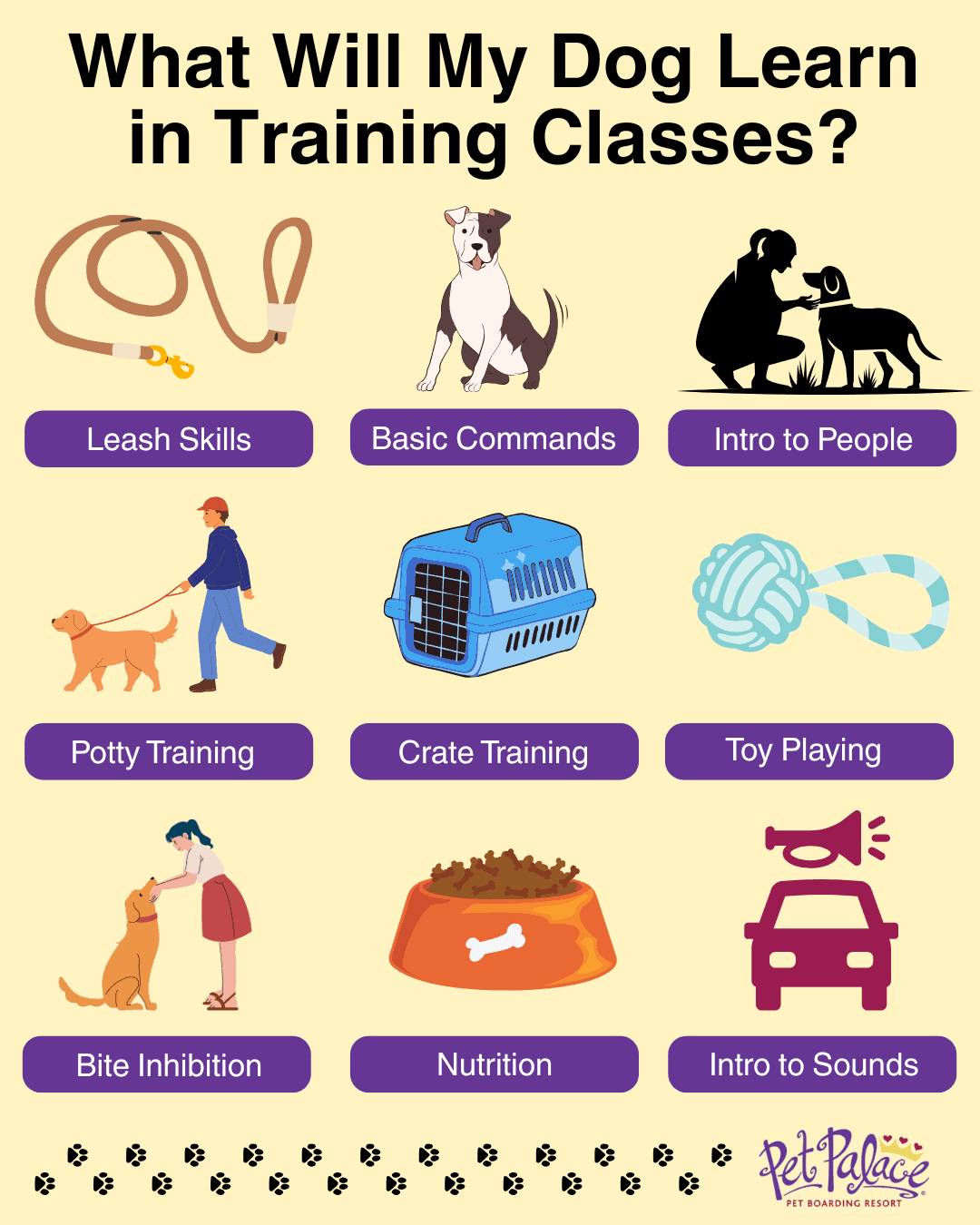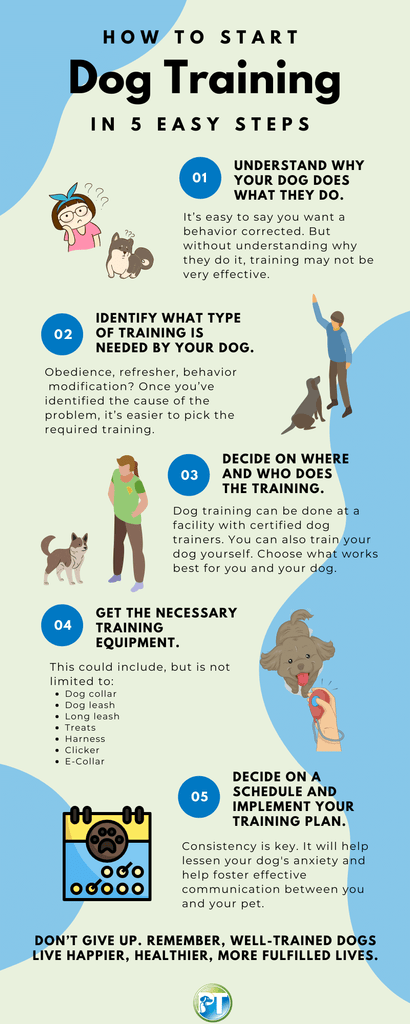Do you want your dog to listen to you without constant reminders? Basic obedience training is the key to building a strong bond with your furry friend.
It teaches your dog simple commands like sit, stay, and come, making daily life easier and more enjoyable for both of you. Imagine having a well-behaved dog that responds to you quickly and confidently. Keep reading to discover how basic obedience training can transform your relationship and bring peace to your home.

Credit: www.petpalaceresort.com
Basics Of Obedience Training
Basic obedience training is essential for every dog. It helps build a strong foundation for communication between you and your furry friend. This training focuses on teaching dogs simple commands, improving their behavior, and ensuring they are well-adjusted members of your family. A well-trained dog is happier and more confident, making it easier to handle in various situations.
Key Commands Every Dog Should Know
Teaching your dog key commands is crucial. These commands include “sit,” “stay,” “come,” “down,” and “heel.” Each command serves a purpose in daily life. “Sit” helps calm your dog and is useful during feeding or greeting guests. “Stay” ensures safety and control, especially in public places. “Come” is vital for recall, keeping your dog close when needed. “Down” encourages relaxation and can prevent jumping. “Heel” aids in walking politely on a leash.
Choosing The Right Training Method
Different dogs respond to different training methods. Positive reinforcement is popular and effective. It involves rewarding good behavior with treats, praise, or play. This method encourages dogs to repeat desired actions. Clicker training is another option, using a device to mark correct behavior followed by a reward. Some trainers use balanced training, combining positive reinforcement with corrections. It’s important to choose a method that suits your dog’s personality and learning style.
Importance Of Consistency
Consistency is key in obedience training. Dogs learn best through repetition and routine. Ensure everyone in the household uses the same commands and techniques. This prevents confusion and strengthens learning. Practice commands regularly, reinforcing them in various situations. Consistent training helps dogs understand expectations and improves their responsiveness. Patience and persistence are vital for success. A consistent approach builds trust and respect between you and your dog.
Preparing For Training Sessions
Preparing for your dog’s basic obedience training sessions sets the tone for success. The right setup helps both you and your dog stay focused and motivated. Thoughtful preparation can turn training time into a positive experience that builds trust and understanding.
Selecting The Ideal Training Environment
Choose a quiet, distraction-free area to start training. This helps your dog concentrate on your commands without being overwhelmed. Your living room or backyard can be perfect spots if they are calm and familiar.
As your dog improves, gradually introduce environments with more distractions, like a park or a busy street. This challenges your dog and reinforces their learning in real-world situations. Have you noticed how your dog reacts differently in noisy places compared to calm ones?
Gathering Necessary Training Tools
Prepare a few key items before each session. Essential tools include a sturdy leash, a flat collar or harness, and plenty of small, tasty treats for rewards. Using treats keeps your dog eager and responsive during training.
Consider adding a clicker if you want to mark good behavior precisely. A favorite toy can also be a useful reward, especially for dogs motivated by play. Keeping everything within reach avoids interruptions and keeps the session smooth.
Setting Realistic Goals
Break down your training into simple, achievable steps. For instance, start with teaching “sit” before moving on to “stay” or “come.” Setting small goals helps you track progress and keeps your dog from feeling overwhelmed.
Think about your dog’s breed, age, and temperament when planning goals. A young puppy might need shorter sessions and slower progress, while an older dog may learn commands faster but require more patience. What small victory will you celebrate first with your dog?
Effective Training Techniques
Effective training techniques build a strong bond between you and your dog. They help your dog learn commands quickly and happily. Consistency and kindness are key to successful obedience training. Using clear signals and rewards encourages good behavior. Training sessions should be short and fun to keep your dog engaged.
Positive Reinforcement Strategies
Positive reinforcement means rewarding your dog for good behavior. Use treats, praise, or play to motivate your dog. Rewards should come immediately after the desired action. This helps your dog understand which behavior earns a reward. Avoid punishment; it can cause fear and confusion. Encouragement builds trust and willingness to learn.
Timing And Patience In Training
Timing is crucial to effective training. Reward your dog right after the correct action. Delayed rewards confuse your dog about what you want. Patience is essential because dogs learn at different speeds. Repeat training exercises regularly, but keep sessions short. Consistent practice helps your dog remember commands better.
Dealing With Common Challenges
Common challenges include distractions, stubbornness, and lack of focus. Manage distractions by training in quiet, familiar places first. Break commands into small steps for easier learning. Stay calm if your dog does not respond immediately. Use gentle corrections and return to rewards quickly. Remember, every dog learns in its own time.

Credit: petstek.com
Building A Strong Bond
Building a strong bond with your dog is the heart of basic obedience training. This bond creates a foundation for learning and good behavior. When trust and understanding grow, training becomes easier and more enjoyable for both of you.
Communication Between Owner And Dog
Clear communication helps your dog understand what you want. Use simple words and consistent signals. Dogs read your tone and body language closely. This makes training more effective. Pay attention to your dog’s responses. Adjust your commands and gestures to be clear and gentle.
Using Training To Enhance Trust
Training sessions build trust step by step. Reward your dog with praise or treats for good behavior. This shows your dog that listening is positive. Avoid punishment or harsh words. Trust grows when your dog feels safe and respected during training. Patience and kindness are key in every session.
Maintaining Motivation Over Time
Keep training fun and interesting to hold your dog’s attention. Use different rewards like toys, treats, or playtime. Short, regular sessions work better than long ones. Celebrate small wins to encourage your dog. Consistency and variety help maintain your dog’s interest and willingness to learn.
Advanced Tips For Success
Advanced tips can make a big difference in your dog’s obedience training journey. They help deepen your connection and improve results beyond basic commands. These strategies push training from routine to reliable, especially when facing real-world distractions or challenges.
Incorporating Socialization
Socialization is more than meeting other dogs—it teaches your dog how to behave calmly around new people and environments. Try taking your dog to different places like parks, pet-friendly stores, or busy streets. Watch how your dog reacts and gently guide them to stay focused on your commands despite distractions.
Have you noticed your dog getting anxious or overly excited around others? Use treats and praise to reward calm behavior during these moments. This reinforces that staying obedient is more rewarding than reacting impulsively.
Adapting Training For Different Breeds
Each breed has unique traits that affect how they learn and respond. High-energy breeds may need shorter but more frequent sessions to keep their attention. On the other hand, more independent breeds might require extra motivation through varied rewards or play.
Understanding your dog’s breed tendencies helps tailor your training approach. Are you adjusting your methods to suit your dog’s personality and natural instincts? This can prevent frustration and keep training enjoyable for both of you.
When To Seek Professional Help
Sometimes, despite your best efforts, progress stalls or behavior issues worsen. At this point, a professional trainer or behaviorist can provide expert guidance tailored to your dog’s needs. They offer tools and insights that you might not find on your own.
Don’t hesitate to ask for help if training feels overwhelming or if your dog shows signs of aggression or anxiety. Early intervention can save you time and stress while promoting a safer, happier relationship with your dog.

Credit: dogwizard.com
Frequently Asked Questions
What Is Basic Obedience Training For Dogs?
Basic obedience training teaches dogs essential commands like sit, stay, and come. It improves behavior and strengthens the human-dog bond. This training ensures safety and helps dogs adapt well in social settings.
Why Is Basic Obedience Training Important?
Obedience training prevents behavioral issues and promotes good manners. It makes dogs easier to manage and safer around people. Training also enhances communication between dogs and owners, leading to a happier relationship.
When Should I Start Obedience Training For My Dog?
Start training as early as 8 weeks old for best results. Early training helps puppies learn faster and develop good habits. Consistency and patience are key throughout the training process.
How Long Does Basic Obedience Training Take?
Training duration varies but typically takes 4 to 8 weeks. Short, regular sessions of 10-15 minutes daily work best. Progress depends on the dog’s age, breed, and consistency in training.
Conclusion
Basic obedience training helps dogs learn important commands and good behavior. It builds trust between you and your dog. Training sessions should be short and regular for best results. Consistency and patience make learning easier for your pet. Well-trained dogs are happier and safer at home and outside.
Start simple, keep practicing, and enjoy a strong bond with your dog. Training is a key step to a joyful life together.







